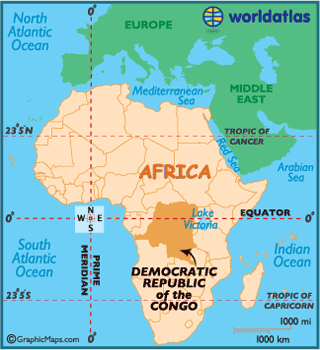My article this week is on my Social Action Project
(SAP) topic which is Coltan mining in the Democratic Republic of the Congo
(commonly known as DRC) which is located in central Africa as shown in the
picture below. About 64% of the world's supply of Coltan, also known as Columbite-tantalite,
is in the DRC. Coltan is a vital metal in so many electronic products from HD
televisions, to hearing aids, to wind turbines, to even x-ray film. Many of the
surrounding countries, but Rwanda and Uganda are the two big players in the Coltan
extraction game. Those two countries alone do not contain much Coltan, but they
pillage the DRC for its vast resource of Coltan. The United Nations said in a 2001
report, according to friendsofthecongo.org, said "The consequences of
illegal exploitation has been twofold: massive availability of financial
resources for the Rwandan Patriotic Army, and the individual enrichment of top
Ugandan military commanders and civilians; the emergence of illegal networks
headed by either top military officers or businessmen." The UN also cites multinational
corporations are also to blame for the fueling the war in the DRC and exploiting
of Coltan. From the article it lists a total of seven US based companies, and
five other non-US based companies. Three of the seven US based companies are
actually based in Ohio. OM group, Eagle Wings Resources International (a subsidiary
of Trinitech International), and Trinitech International are all based in Ohio,
with OM Group based in the Cleveland. According to their website OM Group http://www.cpt.org/work/africa_great_lakes/corporate_complicity
all seven listed companies profited from the conflict in the DRC, including the
three from Ohio. I found the website for OM group, omgi.com/product-recycling.html ,
based in Westlake, Ohio, which states they have a smelting factory in Lubumbashi,
DRC. Factories such as these process and prepare the raw Coltan for big
corporations like Foxconn, Nokia, and Sony. I was unable to find websites for Eagle Wings Resources International, and Trinitech International.
Link to article: http://www.friendsofthecongo.org/resource-center/coltan.html

